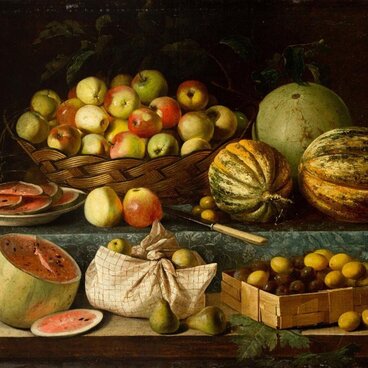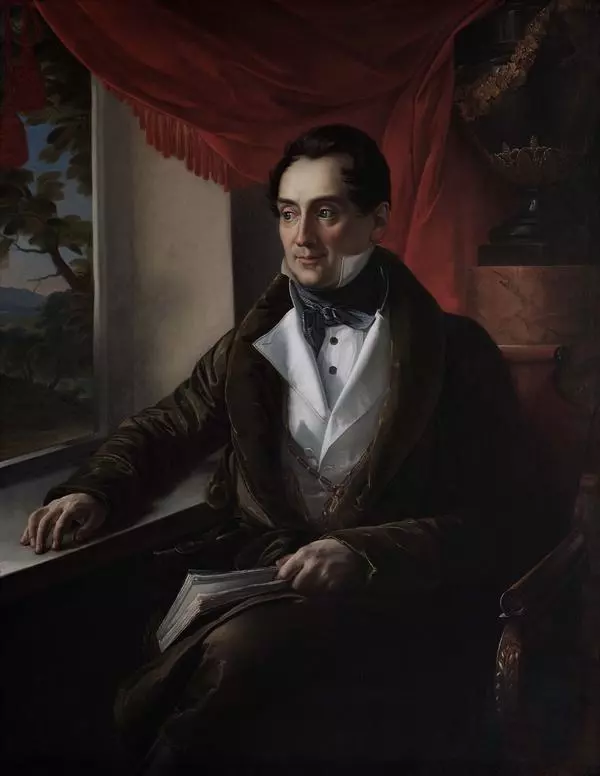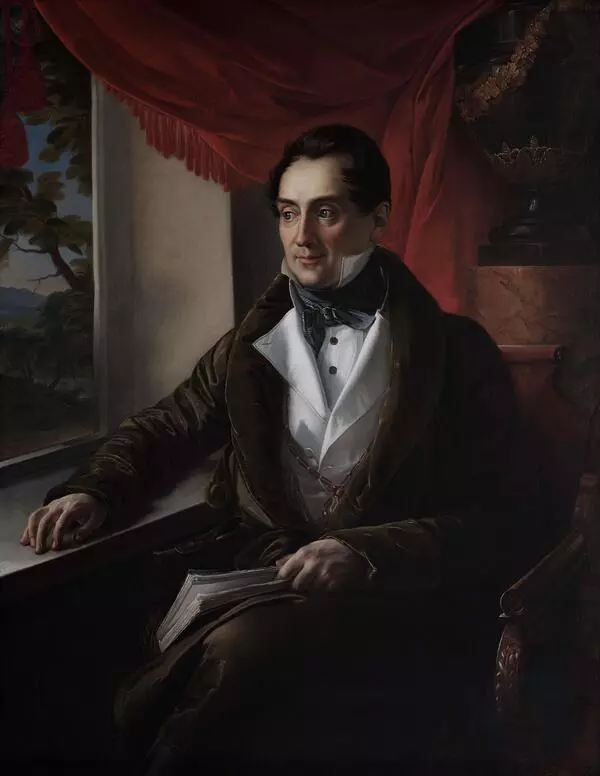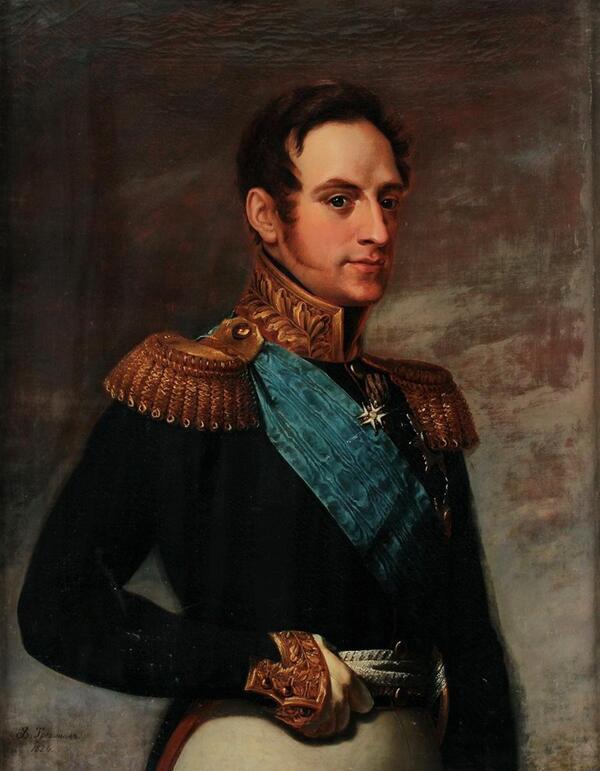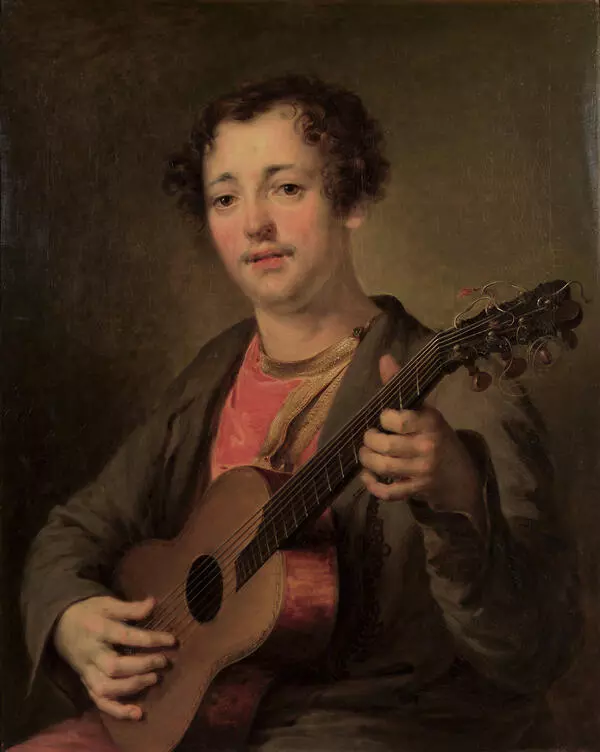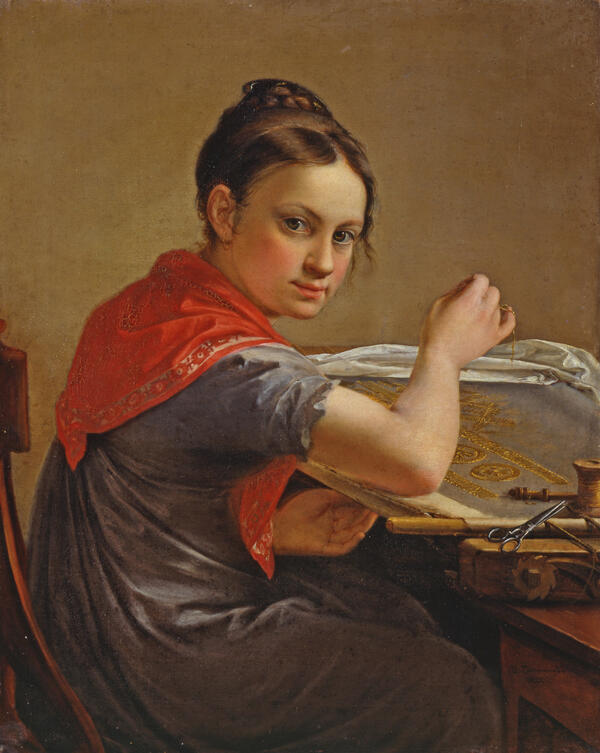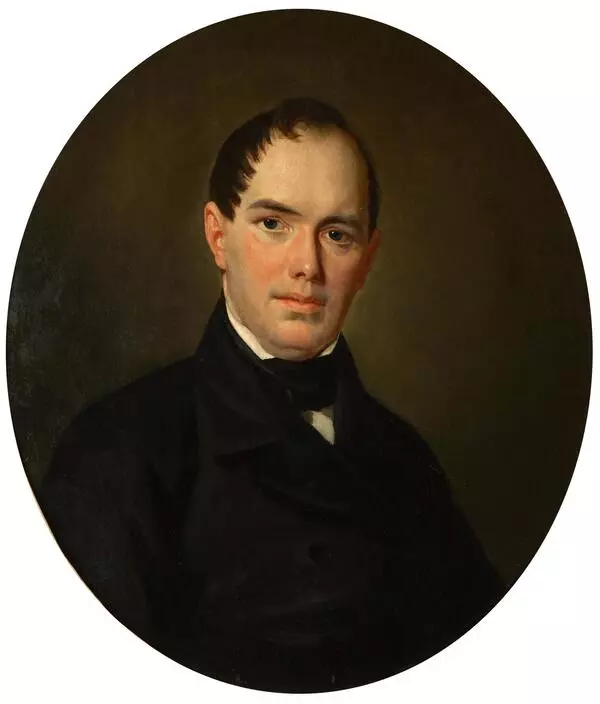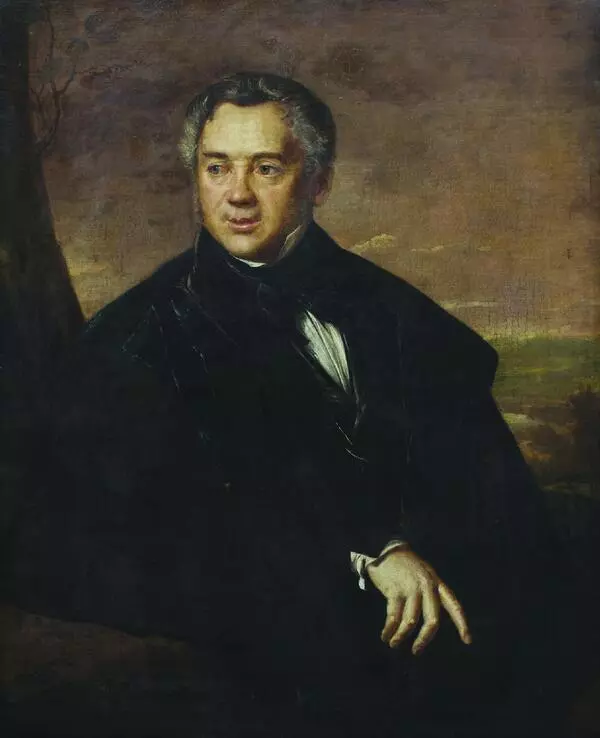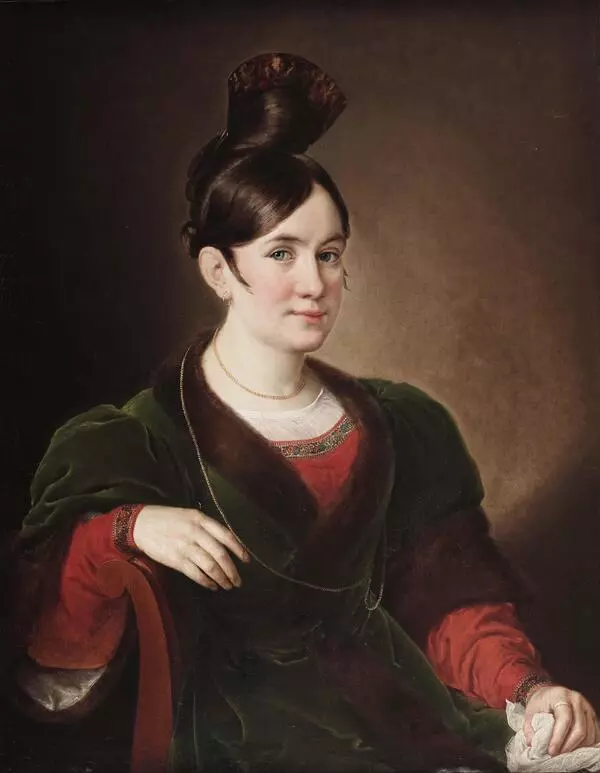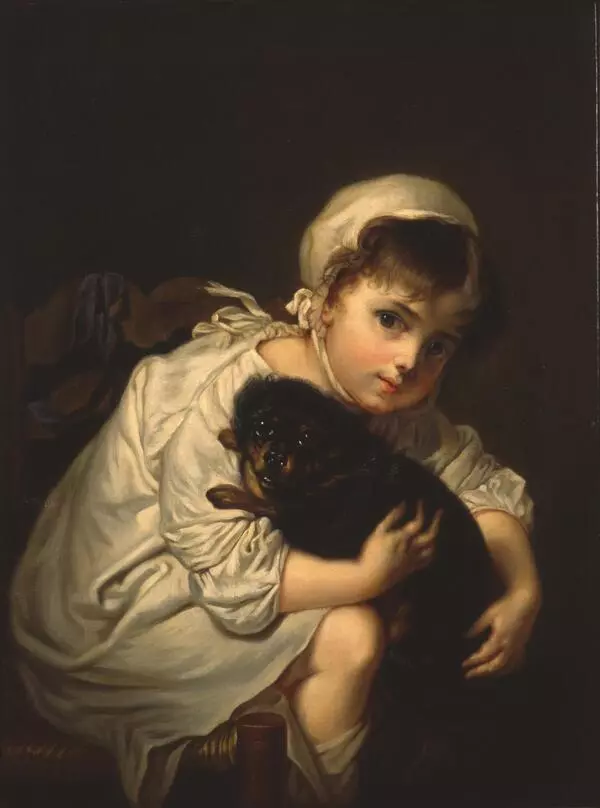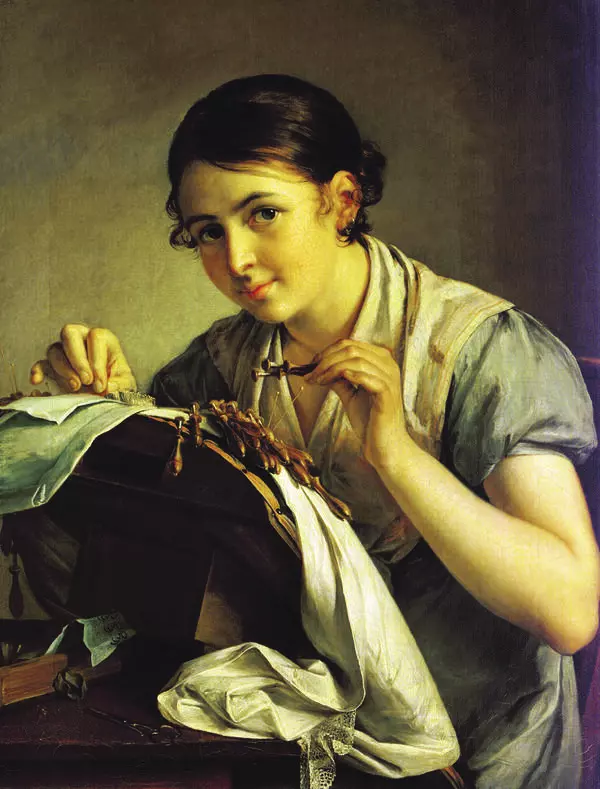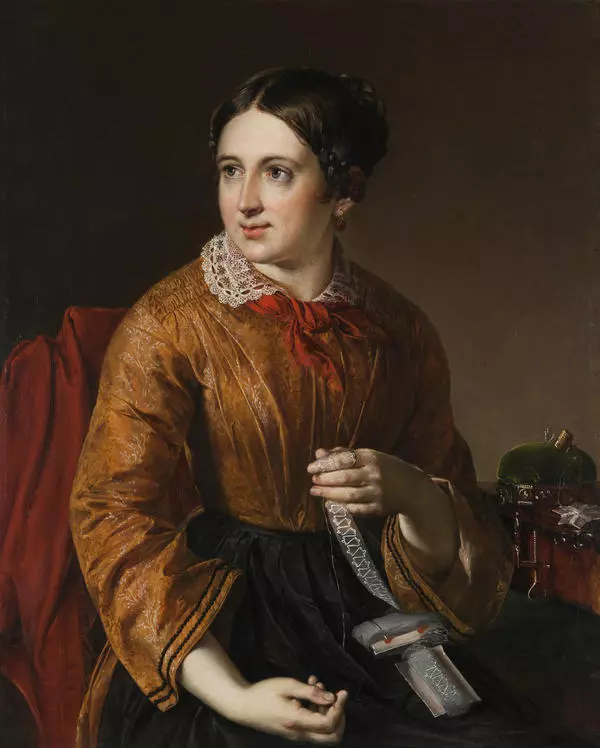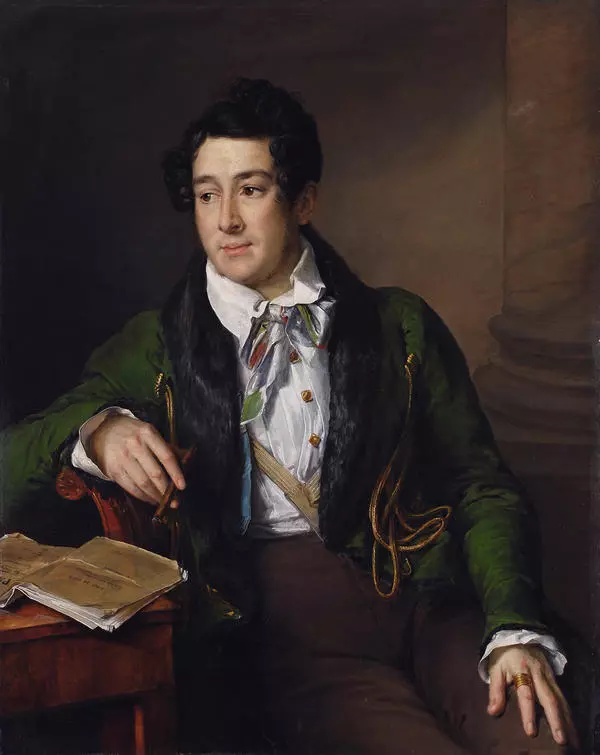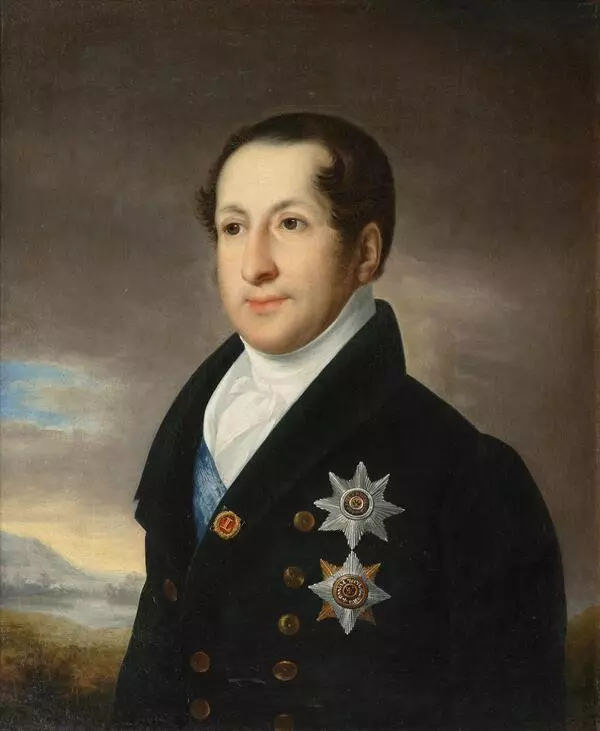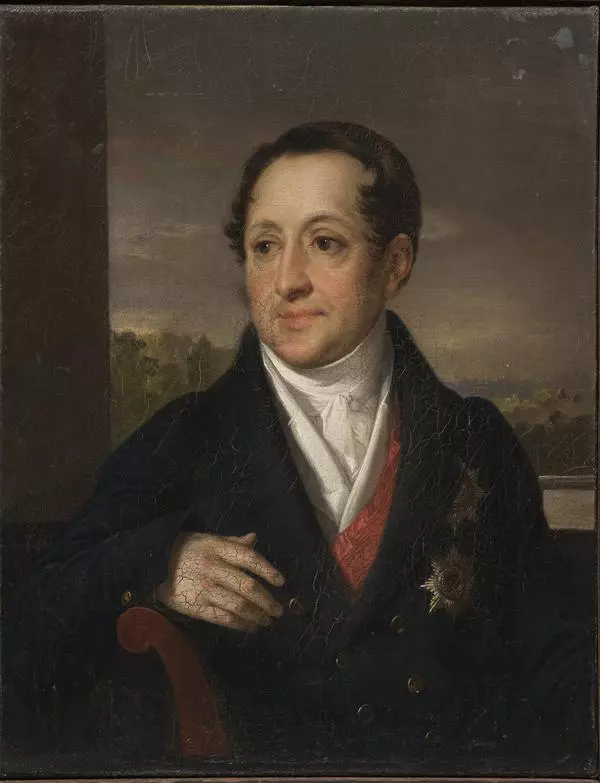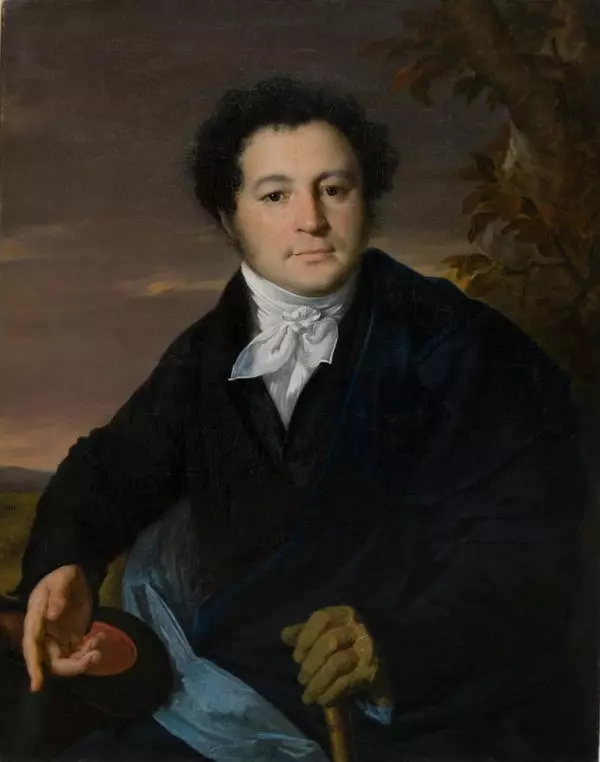The exhibition of the Sevastopol Art Museum named after Mikhail Pavlovich Kroshitsky features a portrait of Sergei Mikhailovich Golitsyn painted by Vasily Andreevich Tropinin in 1828.
Sergei Mikhailovich Golitsyn (1774–1859) was one of the greatest dignitaries, nicknamed “the last Moscow grandee”, owner of the Kuzminki and Grebnevo estates near Moscow, an Active Privy Councillor, 1st class. Being in the center of public life in Russia of his time, Golitsyn held prestigious positions: he was honorary guardian of the Moscow Guardianship Council, trustee of the Moscow school district, chief director of the Golitsyn hospital, a member of the State Council, vice-president of the commission for the construction of the Cathedral of Christ the Savior in Moscow, and more. Sergei Golitsyn was also awarded all the highest Russian orders, but contemporaries mostly remembered him as the husband of a beautiful woman — “Princesse Nocturne” (night princess) Evdokia Ivanovna Golitsyna, who lived with him “in separation”. It was “Pythia Golitsyna” that the young poet Pushkin was fascinated with after graduating from the Lyceum and to whom he dedicated poems.
Among other things, Sergei Golitsyn was a famous collector and supported many artists, including Vasily Andreevich Tropinin who painted his portraits more than once. The portrait from the collection of the Sevastopol Art Museum is an early portrait of Golitsyn. The prince is spectacularly depicted in a ceremonial uniform, with order ribbons and diamond stars, in a slight turn, against the background of a “romantic” sky. Golitsyn probably liked the portrait very much, so the artist repeated it several times. At present, later versions are known, which are kept in the collections of the Museum of Vasily Tropinin and Moscow Artists of His Time, the Saratov State Art Museum named after Alexander Radishchev, the Mordovian Republican Museum of Fine Arts named after Stepan Erzia in Saransk. Most likely, the customer wanted, on the one hand, to see himself “almost young and handsome” despite his age, on the other — to illustrate his services to the Fatherland. In later repetitions of the portrait, the artist had to replace the order and ribbon of Alexander Nevsky with the Order of St. Andrew the First-Called, the highest order in Russia, and to add the sign “50 years of meritorious service”.

